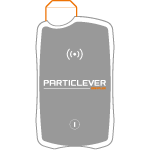Nanoparticle stagnation in air
Nanoparticles, their aggregates and agglomerates have a low density compared to the same materials in a non-nanostructured state (it is not rare to have nanostructured powder densities lower than 1 g/cm3). Due to their very low weight, they almost never sediment.
Nanoparticles, their aggregates and agglomerates, therefore potentially remain in the workplace for several days, especially if the ventilation system is ineffective or non-existent.
The release of nanoparticles into the air through the action of an operator is often limited in time (for example, pouring a nanostructured powder into a tank). Due to this, the exposure of an operator during one working day may correspond to particles that have been diffused and stagnated in the workplace air, rather than those directly released towards the operator. This phenomenon is increased if the operator was wearing personal protection equipment during the operation.
It is therefore easy to understand the difficulties in measuring exposure to manufactured nanoparticles using a method that does not differentiate from particle background, because once the nanoparticles have been released, they will mix with the naturally present nanoparticles. In most cases a simple measurement of concentration numbers will not reveal them.
For all these measurements, PARTICLEVER uses a selection strategy that makes it possible to measure the nanoparticles released by processes, differentiating them from the particle background. The method makes it easier to obtain a measurement that up till now was difficult to achieve.



